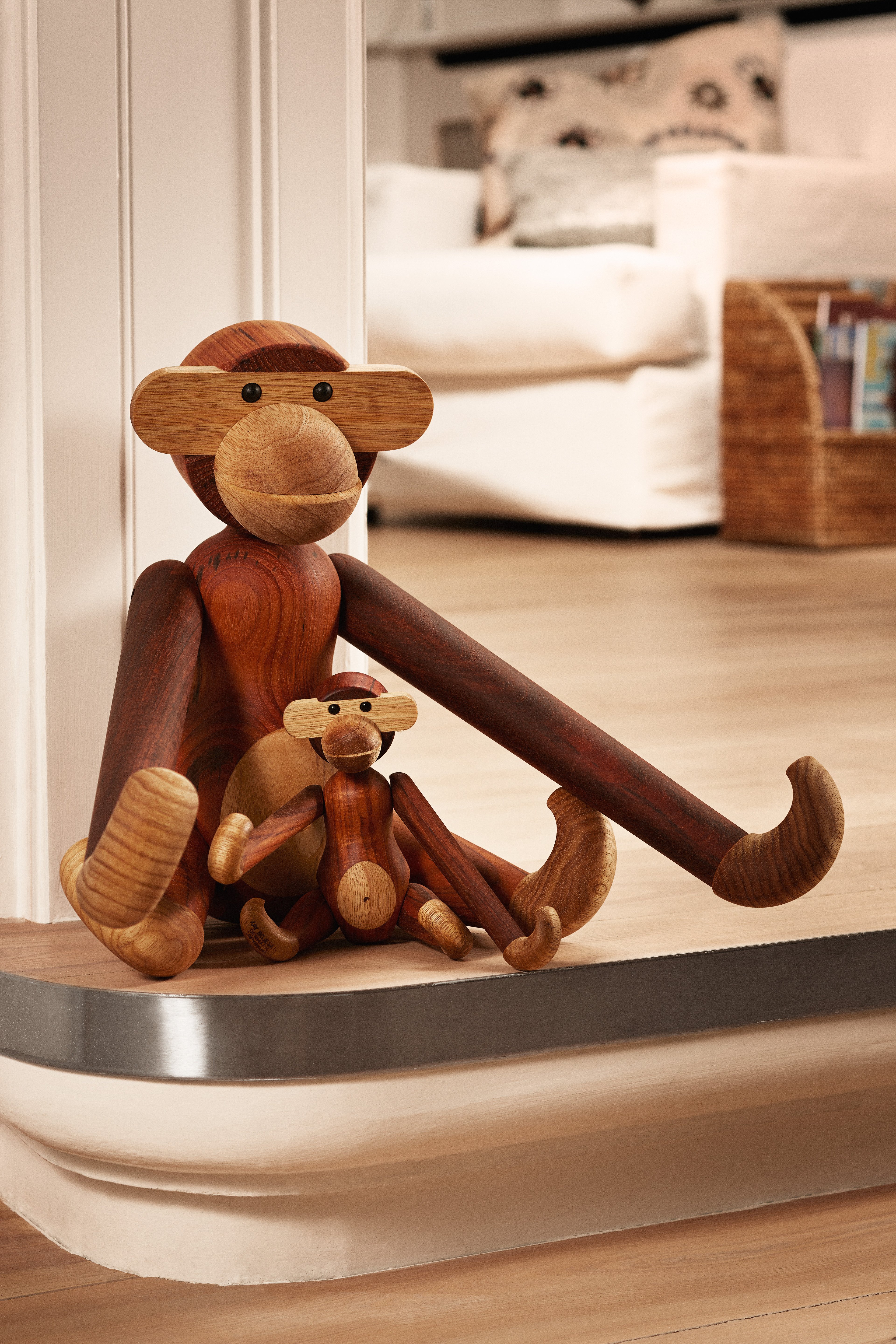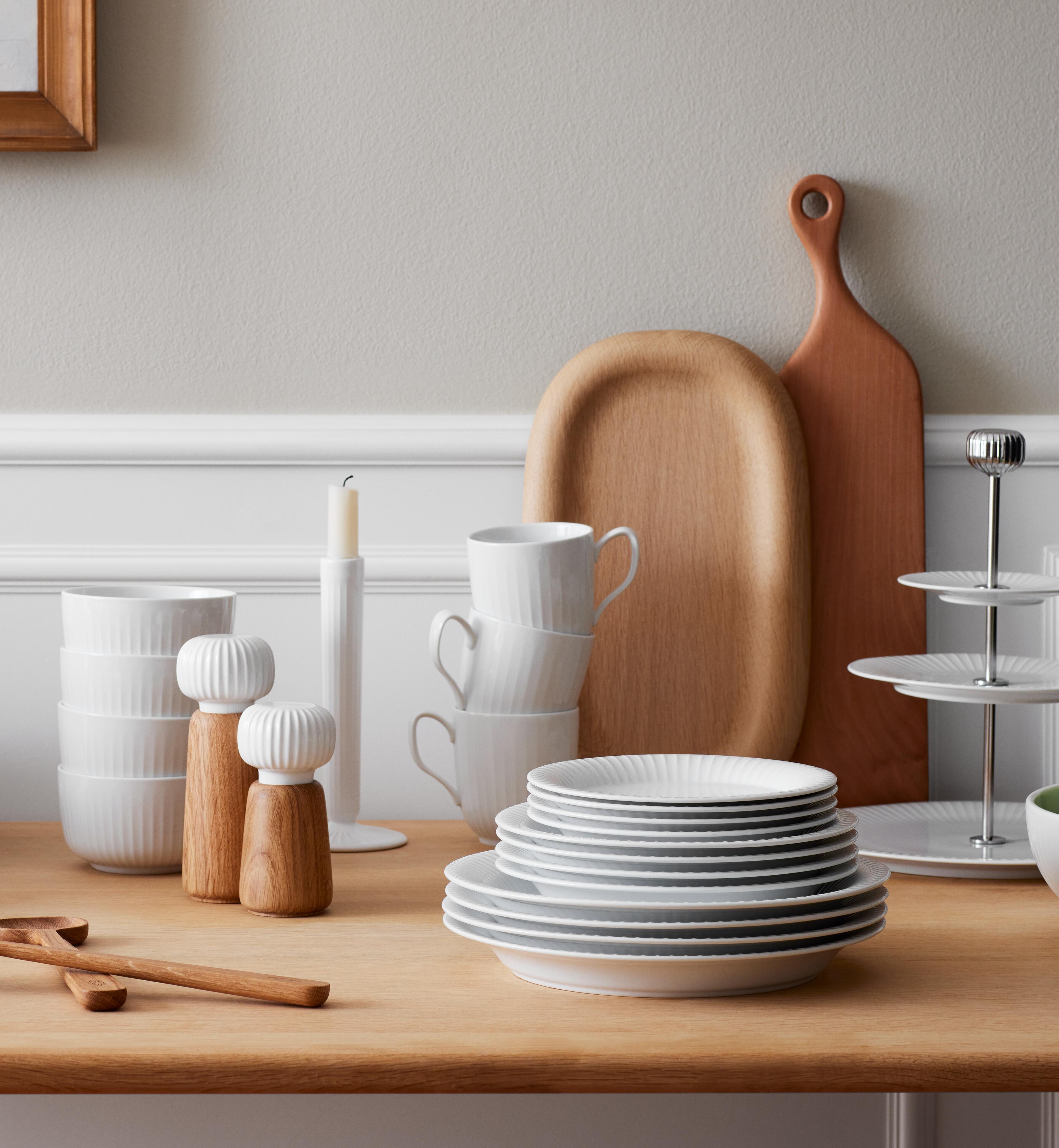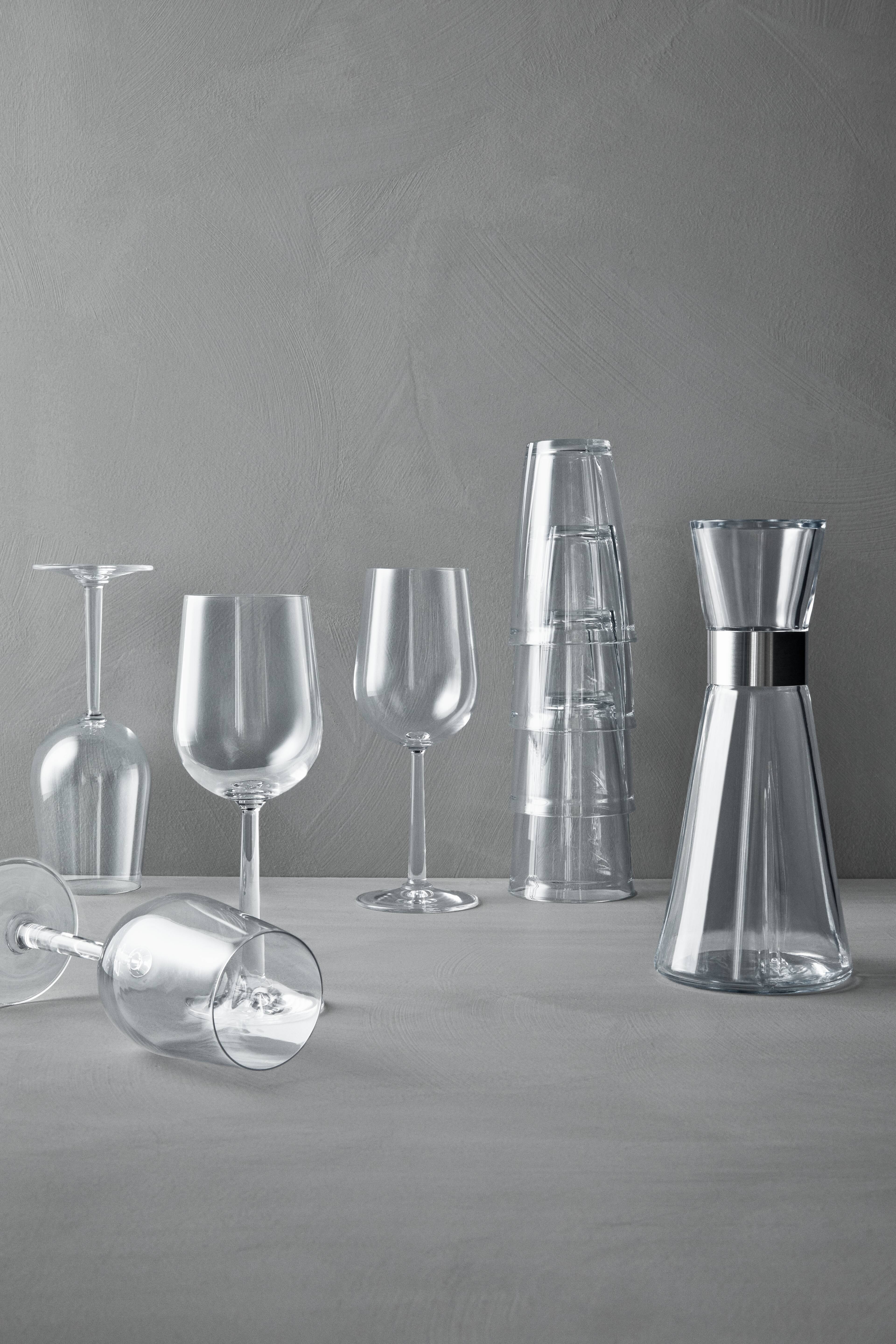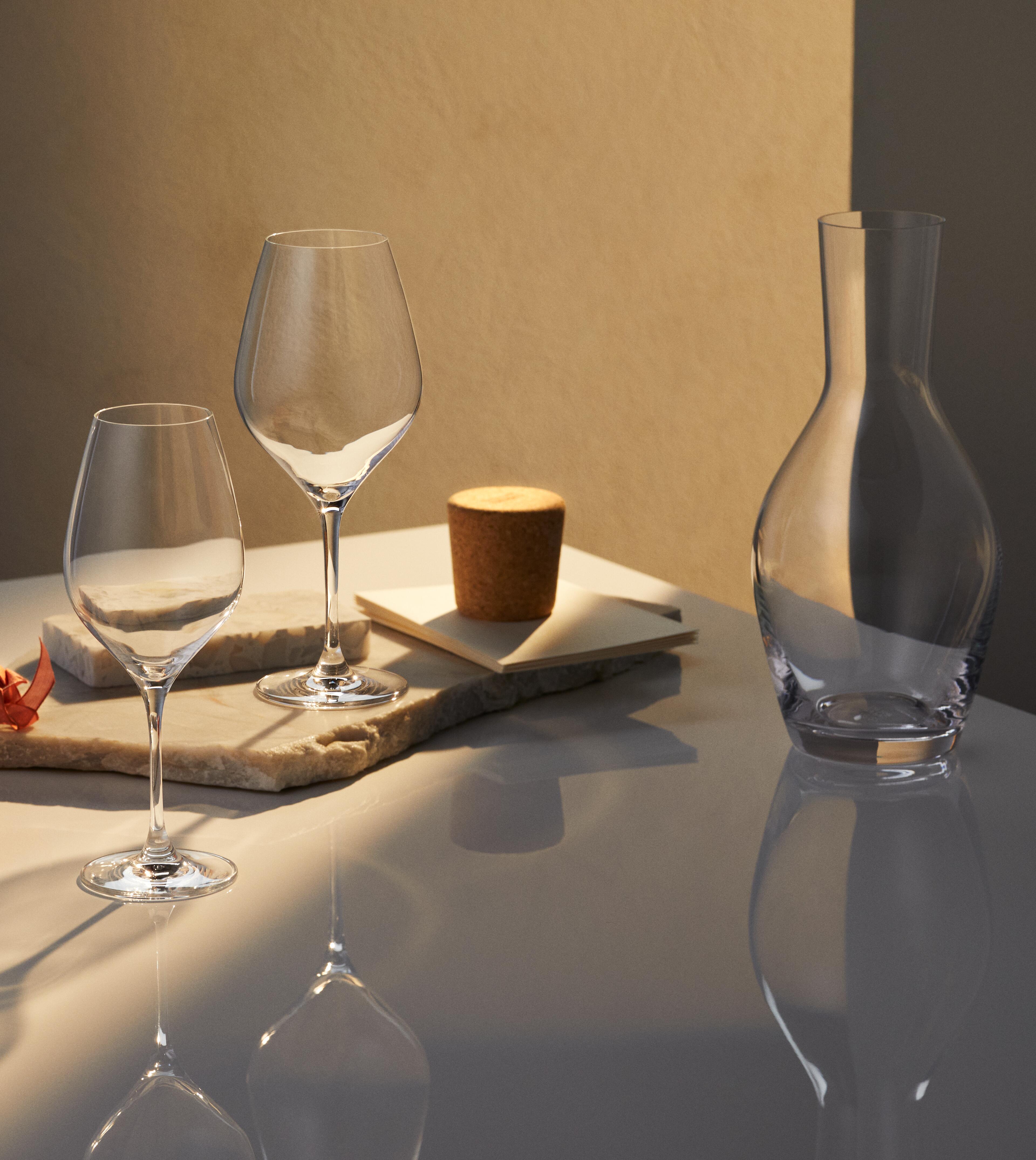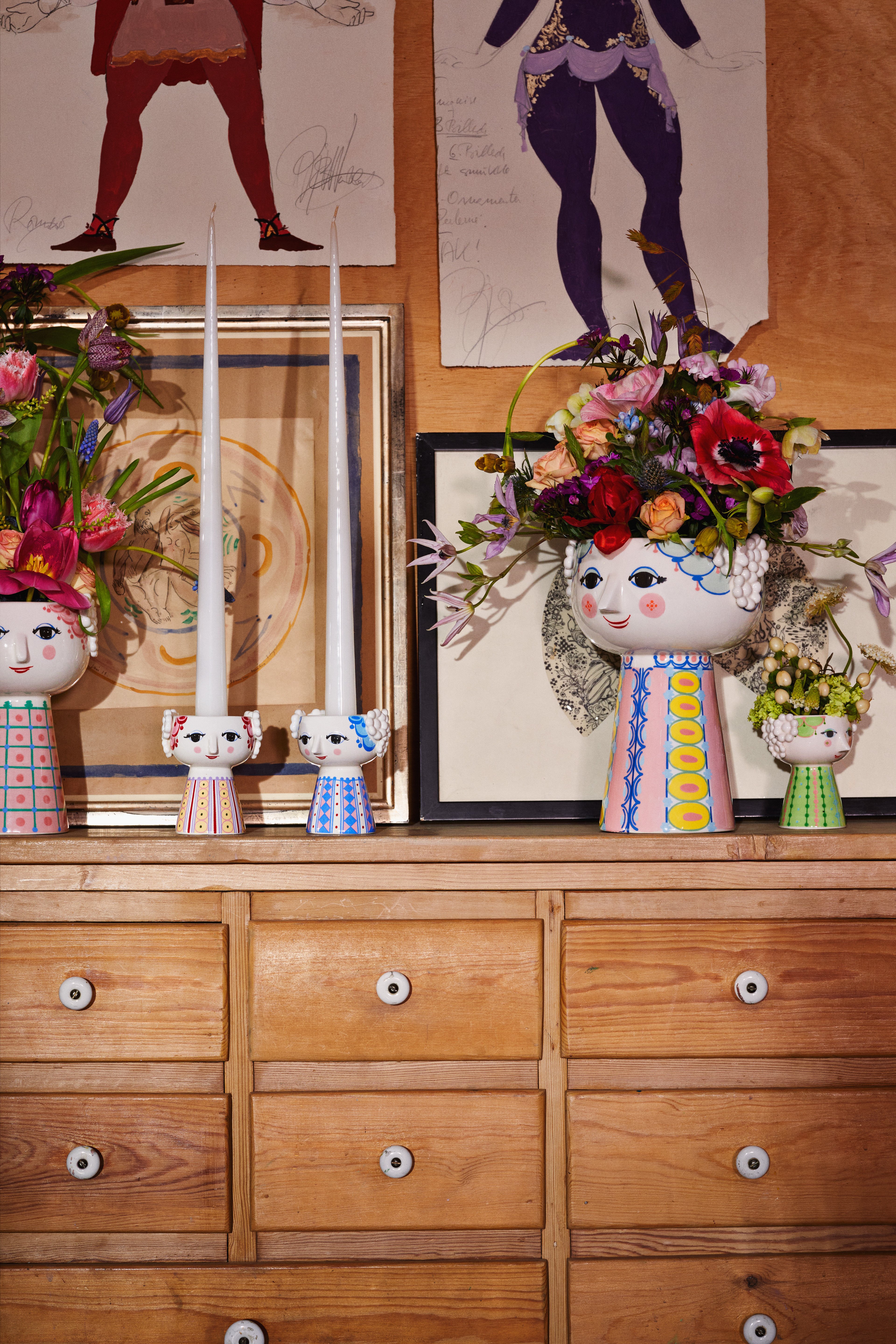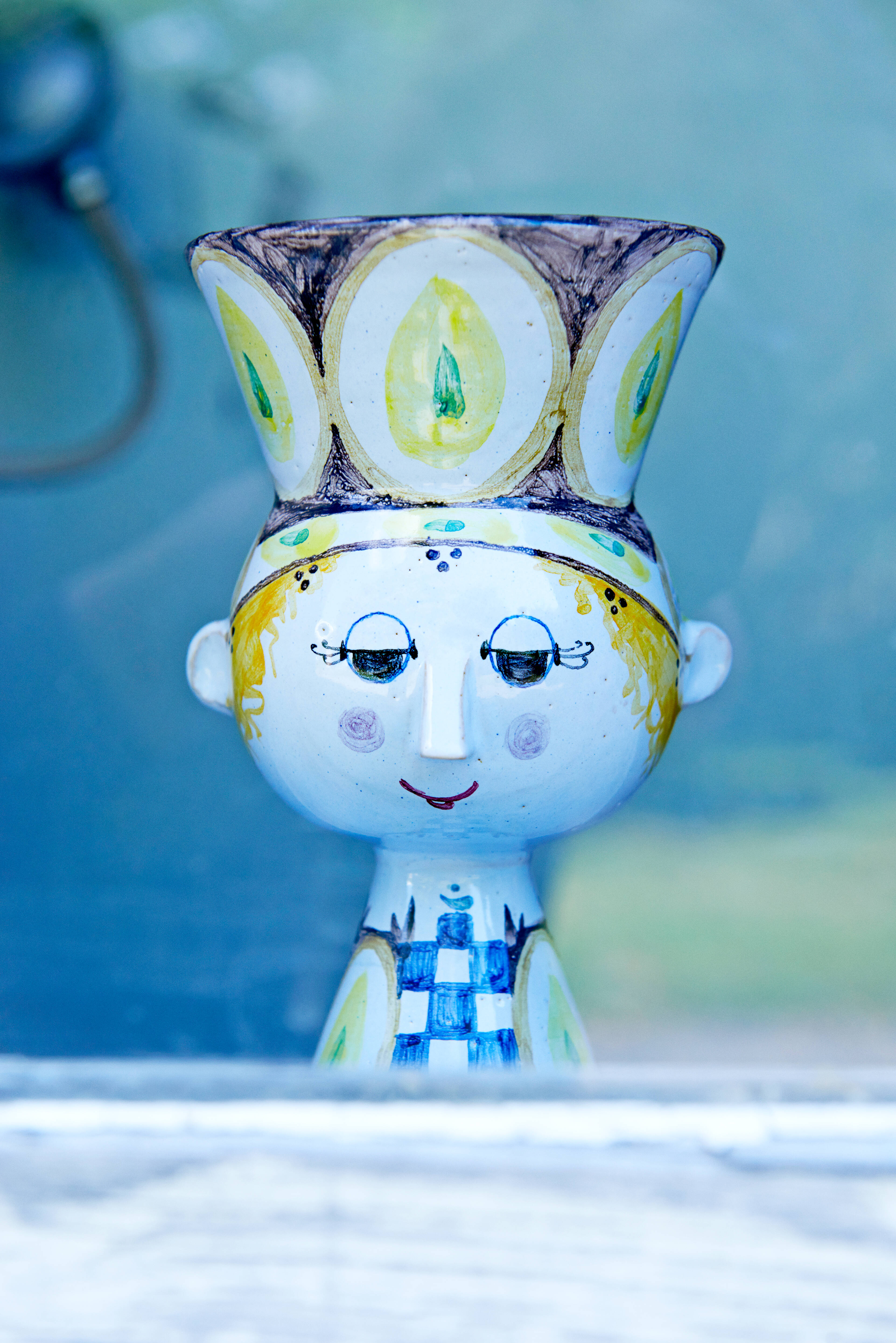
Joie de vivre in every detail

Bjørn Wiinblad (1918–2006) has been described as an artist with a thousand faces because he kept reinventing himself so that he could find new places and new materials to decorate. These include his finely decorated pottery, his imaginative theatre settings and tapestry, his smiling girls such as Eva and Rosalinde, the posters that you will never quite finish exploring and, not least, his candlesticks, glasses and bowls. All of them are infused with a joie de vivre and energy that are unique in Danish – and international – art and design.
Let in the magic and joy
Bjørn Wiinblad’s joy of creating was eclectic. He painted oriental, opulent ladies and quirky fabled animals – and spread joy, magic and imagination among the people at a time when minimalism was at its most dominant. Wiinblad’s brush swept into every nook and cranny of his art, and his urge to decorate kept him at the brush for life.
His unstoppable craving for creativity, his opulent oriental style and boundless talent made him a world artist like no other in Denmark, and today the tale of the cheerful multi-talented artist is celebrated in Bjørn Wiinblad’s authentic magical world and in a modern, functional style.
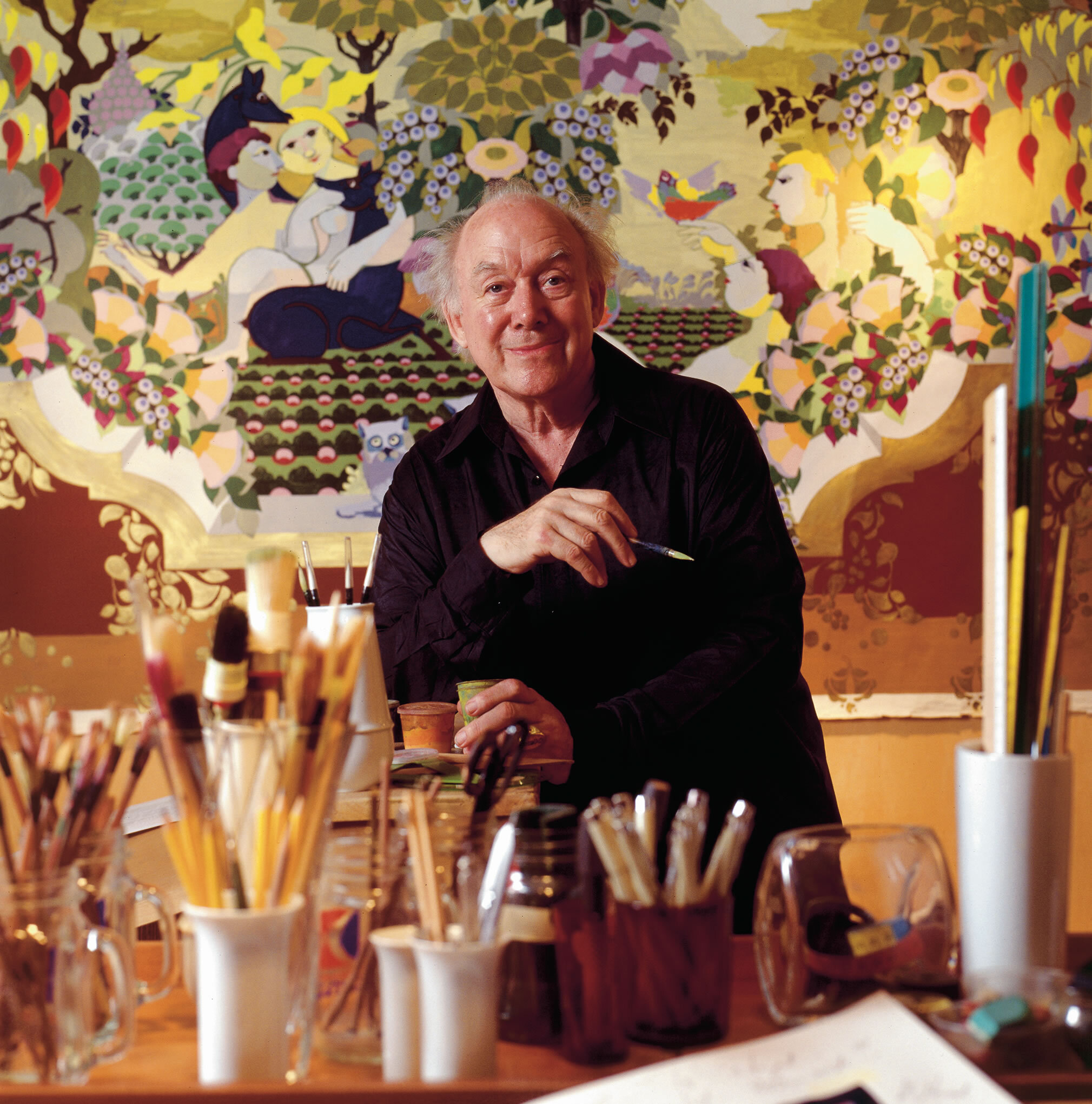
Bjørn Wiinblad was extremely hard-working, which is why he was not only a good businessmanm but also became one of the wealthiest Danish artists in the 1960s and 1970s. So wealthy that for a while he had seven homes - in Denmark, in southern Germany and in Switzerland, which he used as a base when travelling around for his commissions, or when he took his friends on long opera and cultural journeys.
Nobody had expected this to be the case for the young Bjørn Wiinblad when he debuted in 1945. And certainly not when he was born in 1918 in Østerbro, Copenhagen, in a family that was preoccupied with politics and social conditions.
His father, Otto Wiinblad, sat in Landstinget for the Social Democrats, and his grandfather, Emil Wiinblad, was, in his time, editor of the Social Democratic newspaper and for a while also elected for the Landsting. Bjørn Wiinblad’s mother was called Ebba Wiinblad and she kept the family together, ensuring that the whole family, which included Bjørn’s sister Ulla, still took time out to spend in their summer cottage in Hvidovre every summer. Ebba Wiinblad sewed and pickled while the men discussed politics – including with Denmark’s Prime Minister Thorvald Stauning, who was a regular guest of the family until his death in 1942.
However, one little man in the family didn't want to discuss politics. That was Bjørn Wiinblad. He preferred to draw and paint, and over time he also began to write short stories.
Bjørn Wiinblad was a dreamer and had no ambition whatsoever to enter politics. Instead, he found joy in art and creativity.
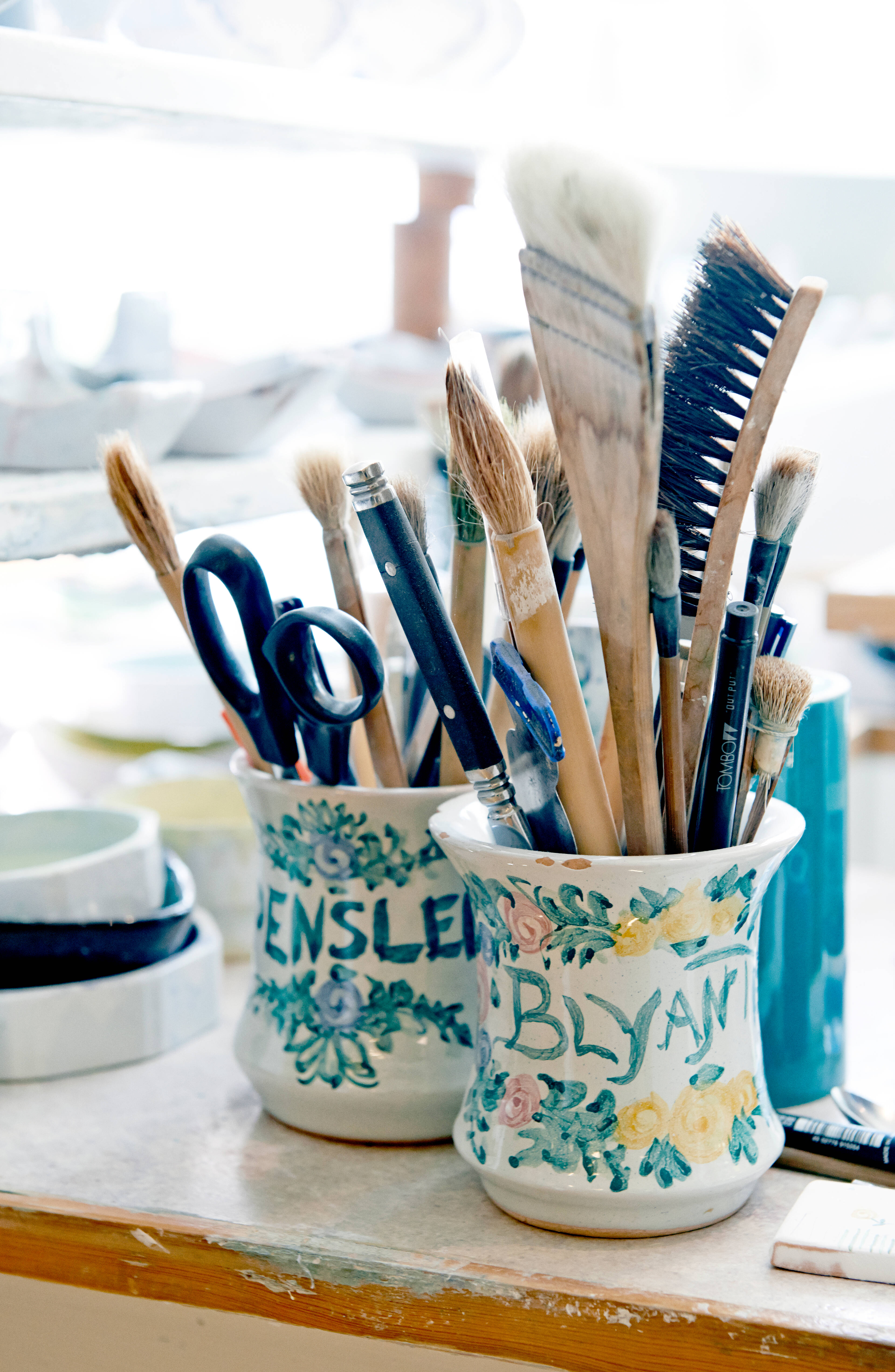
In 1940, Wiinblad was a newly qualified typographer and had he followed the usual path, he would soon have found a job as a printer or compositor in a newspaper. But he couldn't let go of the idea of working with art – and preferably as an illustrator, so in 1940 he started studying at the graphic school in the Royal Danish Academy of Fine Arts. Wiinblad began by following his professor Aksel Jørgensen’s tight graphic style, but soon began looking for a place where he could fully unfold, lose himself in his imagination, and draw elf-like figures, women with almond eyes and beautiful flowers.
He found the answer in ceramics, which fellow student Lars Syberg introduced him to in around 1943. Syberg had his own workshop in Taastrup and invited Wiinblad to try his hand at ceramics. It turned out to be the right thing to do. When Wiinblad wasn't studying at the Academy of Fine Arts, he unleashed himself in Lars Syberg’s workshop. He couldn't twist or shape the ceramic, but he could decorate it and was particularly enthusiastic about working with the old cow horn technique, filling a cow's horn with colour and applying it to a pot or dish. This gives a particularly fine line and requires a steady hand.
In 1945, Wiinblad graduated from the Royal Danish Academy of Fine Arts, and that same year he debuted with a comprehensive exhibition in the small Binger gallery in Palægade in Copenhagen.
In addition to displaying a wealth of ceramic pots, dishes and bowls, he exhibited drawings, posters and illustrations for the book Aladdin and his magical lamp. The exhibition became a major attraction, and Wiinblad sold art worth 1000 kroner from day one. However, the most important thing about the exhibition was that he met a number of people who could soon get him started making even more ceramics and drawing even more posters. These included Jacob E. Bang, who had just become creative director of the small pottery factory, Nymølle. He quickly became friends with Wiinblad, and Jacob E. Bang soon hired the young Wiinblad to work for Nymølle, which in the years that followed led to a wealth of plates, bowls, cups, dishes, ashtrays and candleholders adorned with Wiinblad’s drawings flowing out the workshop.
This is how Bjørn Wiinblad came to be in every Dane's home – most people were able to afford the goods that came from the factory. His art reached ordinary people and that’s what he really wanted – allowing as many people as possible to enjoy the imaginative and opulent design he’s still known for.
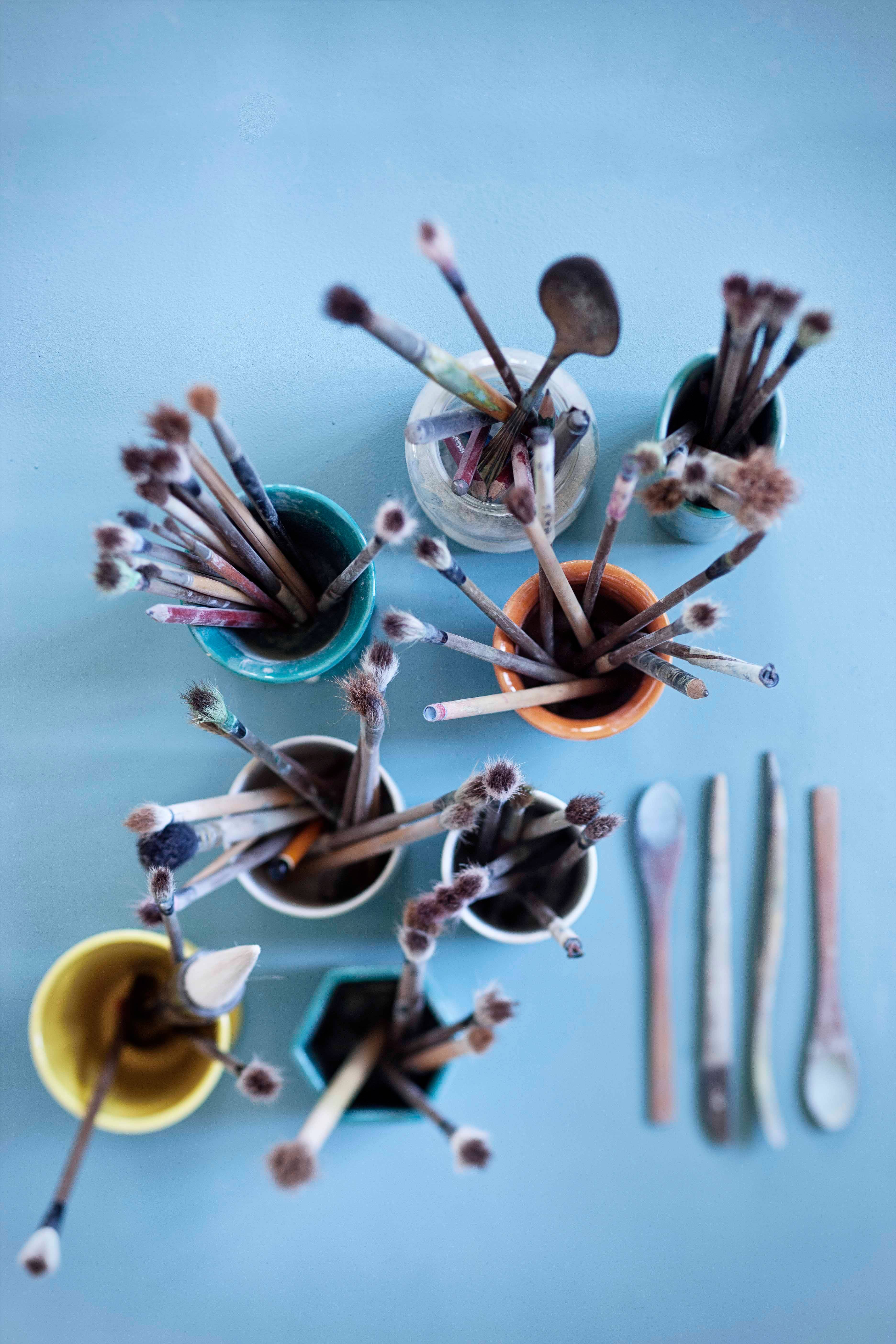

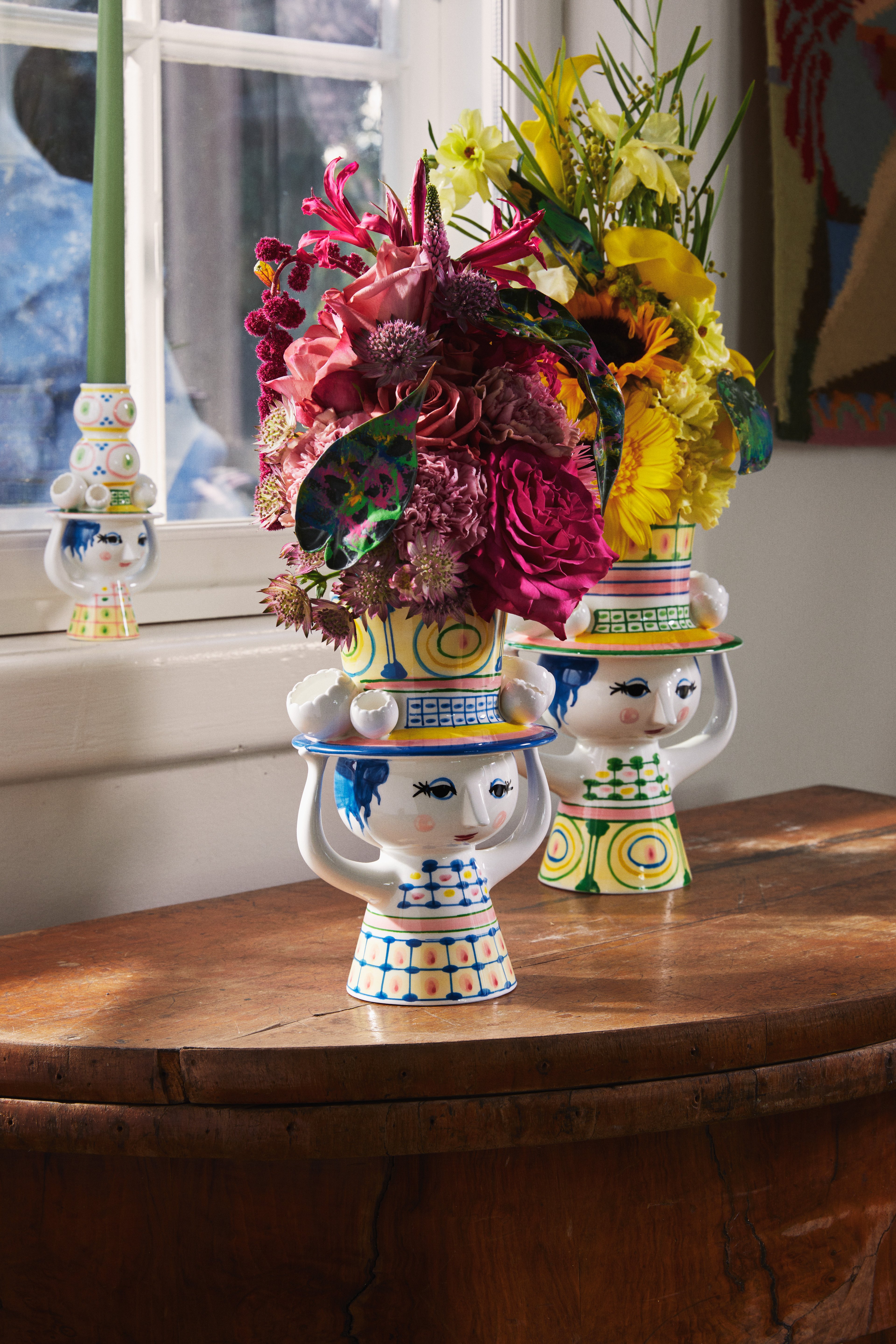

Wiinblad’s joie de vivre is exactly what we want to bring to our contemporary designs. And a design that perfectly reflect that joie de vivre is the Guirlande Christmas dinner service. With its fusion of crisp white porcelain and red drapes, the dinner service exudes modern Nordic tradition – but also the playful and imaginative world that Bjørn Wiinblad is known for. Christmas is full of traditions, but it’s mainly a celebration of love. And where there's love, there's Bjørn Wiinblad.
Bjørn Wiinblad followed his own path. Not just in Denmark, but all over the world with a colourful personality and generosity that was expressed in both personal relationships and in his detailed and diverse designs. He was quite simply great company, sharing stories, dinner parties, gifts and joie de vivre to the delight of family, friends and others who were lucky enough to cross his path.
It is precisely this kind of feeling that we want to create with our products. Because everyone deserves to have a bit of Bjørn Wiinblad’s magical joy in their lives.
